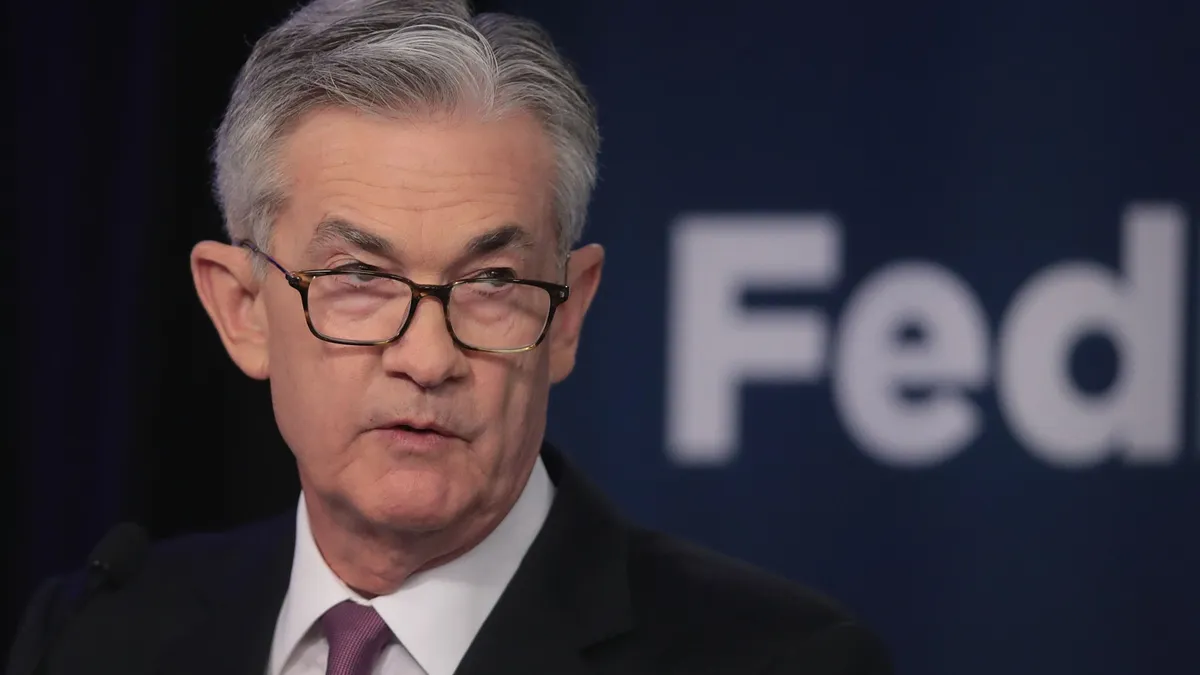Dive Brief:
- Federal Reserve Chair Jerome Powell said on Wednesday that although high price pressures and job gains exceeded forecasts so far this year, the data did not dim the prospect that inflation will fall toward the central bank’s 2% target.
- “Recent data on both job gains and inflation have come in higher than expected,” Powell said in a speech. “The recent data do not, however, materially change the overall picture, which continues to be one of solid growth, a strong but rebalancing labor market and inflation moving down toward 2% on a sometimes bumpy path.”
- If current economic trends continue, the Fed in 2024 will likely trim borrowing costs from a 23-year high, Powell said. Yet central bank officials are in no hurry to ease policy, he said, adding “given the strength of the economy and progress on inflation so far, we have time to let the incoming data guide our decisions on policy.”
Dive Insight:
During the three months through February, employers added an average 265,000 jobs per month — the fastest pace since June, Powell said.
Also, inflation during January and February exceeded the pace during the second half of 2023, Powell noted, citing the 2.8% gain during February in the 12-month core personal consumption expenditures price index, which excludes food and energy.
“The job of sustainably restoring 2% inflation is not yet done,” he said.
The outlook for the economy is murky, and the Fed must balance the risks of easing monetary policy too early or too late, Powell said.
“Reducing rates too soon or too much could result in a reversal of the progress we have seen on inflation and ultimately require even tighter policy to get inflation back to 2%,” he said. “But easing policy too late or too little could unduly weaken economic activity and employment.
“As progress on inflation continues and labor market tightness eases, these risks continue to move into better balance,” Powell said.
Cleveland Fed President Loretta Mester said yesterday she sees a larger hazard from cutting borrowing costs too early.
“I think the bigger risk would be to begin reducing the [federal] funds rate too early,” Mester said in a speech. “And with labor markets and economic growth both being very solid, we do not need to take that risk.”
Fed policymakers on March 20 left the main interest rate unchanged for the fifth consecutive policy meeting and forecast reductions in the federal funds rate this year totaling 0.75 percentage point.
The central bank will likely trim the federal funds rate by the end of 2024 to 4.6% from the current range between 5.25% and 5.5%, according to a median projection by Fed officials. Core PCE will probably fall by the end of this year to a 2.6% annual rate, according to Fed officials’ median projection.
Following Powell’s comments, traders in interest rate futures set 62% odds that the Fed will cut the federal funds rate by at least a quarter point on June 12, unchanged from their projection on Tuesday, according to the CME FedWatch Tool. They see 61% odds that the central bank will trim the benchmark rate by at least 0.75 percentage point by the end of 2024.
Yet just one quarter-point reduction will likely be appropriate this year in light of low unemployment, falling disinflation and solid economic growth, Atlanta Fed President Raphael Bostic said Wednesday.
“If the economy evolves as I expect — and that's going to be seeing continued robustness in GDP, in employment, and a slow decline of inflation through the course of the year — I think it would be appropriate for us to start moving down at the end of this year — the fourth quarter,” Bostic said in a CNBC interview.
The Atlanta Fed on Monday upgraded by 0.5 percentage point its estimate for Q1 economic growth, forecasting that gross domestic product will increase at a 2.8% annual rate.












